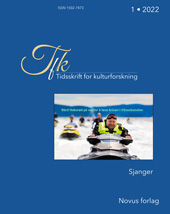Sammendrag
In the Norwegian truth and reconciliation commission («Kommisjonen for å granske fornorskingspolitikk og urett overfor samer, kvener og norskfinner, og skogfinner»), appointed 2018, much emphasis is on giving those affected by the so-called ‘politics of Norwegianization’ an opportunity to tell their narratives about the consequences of this policy (usually said to have taken place during the duration of 1850–1950). In the mandate, formulated by the Norwegian Parliament, the commission is urged to provide opportunities for those affected to share their personal experiences and narratives of the Norwegianization policy. The narratives are collected and documented through interviews and open meetings. Partly based on the work of other similar truth commissions, this article will examine how such collected narratives have been interpreted. From a folkloristic point of view, what kind of narratives can they be categorized as, and what happens when the context for dissemination changes from the private space to a public investigation? Can folkloristic research in any way support the understanding and appreciation of these narratives?

Dette verket er lisensiert under Creative Commons Attribution-ShareAlike 4.0 International License.
Opphavsrett 2022 Stein R. Mathisen

